Coronavirus Australia live news: Daniel Andrews, Brett Sutton back away from Covid modelling
Queensland’s Deputy Premier hits back in border row with attack on Home Affairs Minister Peter Dutton.
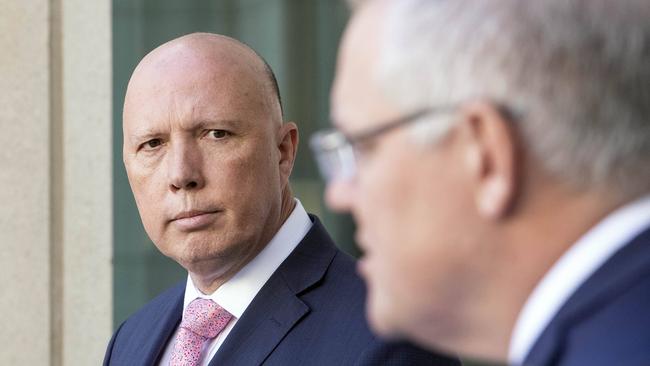
- Health Minister accuses Dutton of lying about Tom Hanks
- Premier now says lockdown modelling not so important
- Desperate hotel quarantine guest ‘deliberately overdosed’
- Victoria records 37 new cases, six deaths
- First vaccine ‘unlikely to deliver knockout’
Welcome to The Weekend Australian’s rolling coverage of the ongoing coronavirus pandemic. Victoria has recorded its lowest daily case rise since June, meanwhile state leaders in South Australia and the Northern Territory are considering removing travel bans among certain states.
Agencies 9.15pm: US, India and Brazil report most new deaths
The novel coronavirus has killed at least 916,372 people since the outbreak emerged in China last December, according to a tally from official sources compiled by AFP on Saturday.
At least 28,534,330 cases of coronavirus have been registered. Of these, at least 19,016,500 people are now considered recovered.
The tallies, using data collected by AFP from national authorities and information from the World Health Organisation, probably reflect only a fraction of the actual number of infections.
Many countries are testing only symptomatic or the most serious cases. On Friday, 6012 new deaths and 316,377 new cases were recorded worldwide. Based on latest reports, the countries with the most new deaths were United States with 1289 new deaths, followed by India with 1201 and Brazil with 874.
The US is the worst-hit country with 193,016 deaths from 6,445,800 cases. At least 2,417,878 people have been declared recovered.
After the US, the hardest-hit countries are Brazil with 130,396 deaths from 4,282,164 cases, India with 77,472 deaths from 4,659,984 cases, Mexico with 70,183 deaths from 658,299 cases, and the United Kingdom with 41,614 deaths from 361,677 cases.
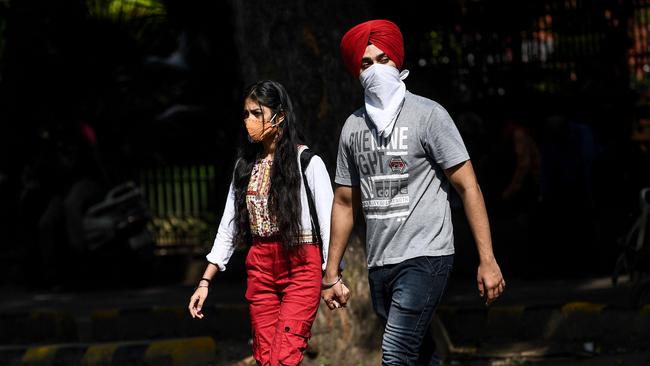
The country with the highest number of deaths compared to its population is Peru with 92 fatalities per 100,000 inhabitants, followed by Belgium (86), Spain (64), Bolivia (62), and Chile (62).
China -- excluding Hong Kong and Macau -- has to date declared 85,174 cases, including 4634 deaths and 80,386 recoveries.
Latin America and the Caribbean overall has 307,425 deaths from 8,155,411 cases, Europe 220,762 deaths from 4,433,231 infections, the US and Canada 202,222 deaths from 6,581,156 cases.
In Asia, there have been 113,177 deaths from 6,339,527 cases, in the Middle East 39,576 deaths from 1,653,351 cases, in Africa 32,353 deaths from 1,341,140 cases, and in Oceania 857 deaths from 30,515 cases.
As a result of corrections by national authorities or late publication of data, the figures updated over the past 24 hours may not correspond exactly to the previous day’s tallies.
AFP
ALSO READ: China tests vaccines on many thousands of people
Jack Paynter 5.43pm: Police pounce on anti-lockdown protesters
Fourteen people were arrested and at least 51 have been fined during anti-lockdown protests across Melbourne.
Police branded the activity “disappointing” and late on Saturday said they expected to issue further fines.
One man who was arrested says it was worth the fine after he bizarrely made himself known to police as they started to walk away.
The man called out to police as they crossed the road and proudly displayed a sign before being handcuffed and led away.
He told NCA NewsWire before his arrest he was not a conspiracy theorist, but just anti-government and anti-lockdown and was prepared to get arrested and fined for it.
About 100 people attended the protests across various locations, police said.

“Despite all the warnings, it was disappointing to see individuals turn out to protest in the city today, putting the lives of Victorians at risk,” the force said in a statement on Saturday afternoon.
“Our investigations into this protest will continue, and we expect to issue further fines once the identity of individuals has been confirmed.”
“Anyone thinking of attending a protest can expect the same swift and firm response from police as has occurred today and at previous protests that were in breach of Chief Health Officer restrictions.”
Police visited 90 “persons of interest” to urge them not to attend the demonstrations before today’s protests.
READ MORE: What Islamists and ‘Wokeists’ have in common
Jared Lynch 5pm: Big tech to uncork supply bottlenecks
Artificial intelligence and big data are being unleashed across Australian businesses to combat predicted shortages of groceries and other products in the lead-up to Christmas and help sidestep trade disruptions from an increasingly hostile China.
KPMG has unveiled a platform it calls a “powered supply chain with predictive modelling capability” that uses AI and big data to pinpoint bottlenecks in supply chains and allocate resources and inventory to where they are needed most. It comes a day after Woolworths chief executive Brad Banducci warned the Victorian government that the state could run out of some food staples for Christmas if onerous coronavirusfuelled restrictions on workplaces, warehouses and distribution centres are maintained.
KPMG’s partner in charge of Asia-Pacific supply chain advisory, Peter Liddell, said COVID-19 had up-ended normal supply-and-demand modelling and greater visibility of “choke points” was needed to combat shortages of high-demand goods.
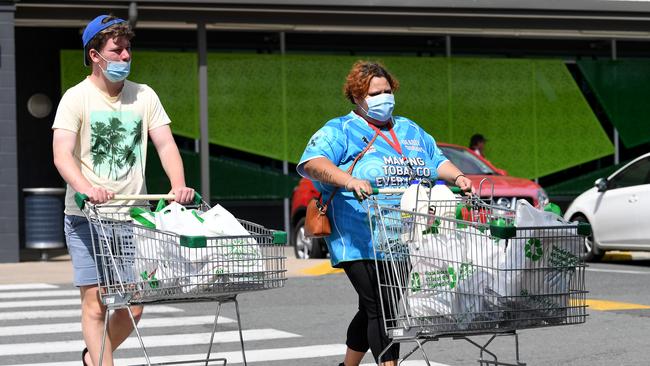
Mr Liddell said the use of AI enabled a real-time analysis of myriad data points that human-based systems could not absorb, which helped clear bottlenecks in supply chains by enabling businesses to predict disruptions and changes in consumer behaviour.
The COVID-19 pandemic and the devastating bushfires over summer had accelerated the use of such technology as supply chains came under unprecedented pressure from social distancing measures, product shortages and panic buying.
Mr Liddell said that underlined the importance of businesses being able to respond more quickly to potential disruptions, particularly in the lead-up to the busy Christmas period, which the nation’s supermarkets were expecting to be their biggest ever, forecasting COVID-19 restrictions to lift turnover by 20-30 per cent.
Read the full story here.
Emily Ritchie 4.25pm: Federal DCMO defends Queensland border call
Deputy chief health officer Dr Nick Coatsworth has defended his Queensland counterparts on the hard line they have taken on border exemptions, calling it a “very challenging situation”.
It comes just days after a grieving daughter was banned from attending her father’s funeral.
“It has clearly been challenging and deeply distressing for the families that have had to either not see loved ones or have to quarantine before seeing loved ones,” Dr Coatsworth said.
“These are the effects of having borders closed and we all have to consider the balance between those border closures and the effect that they are having to keep out COVID-19 from a state or territory and whether that balance is actually achieved — ultimately that’s a decision for the chief health officer in Queensland.”
Dr Coatsworth said there had been 46 new cases of the virus reported on Saturday — 37 in Victoria, six in NSW and three in Queensland.
“It is clear that those numbers are continuing to improve nationally and, very pleasingly, the numbers in Victoria continue to improve,” he said.
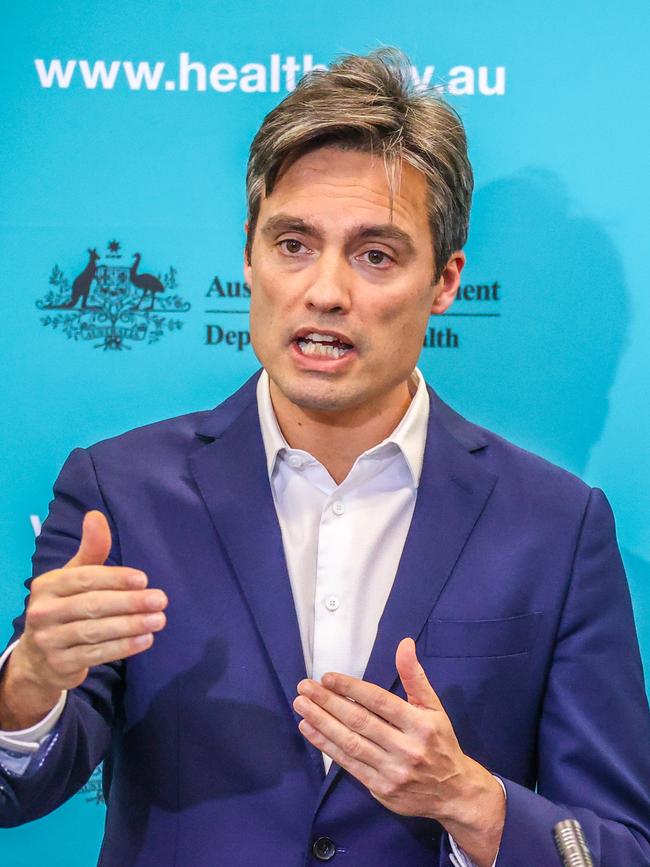
He took a moment to acknowledge our nation’s health workers — who have made up 15 per cent of the cases in Victoria’s second wave — ahead of Nursing in the Community week.
“More than 70 per cent of COVID-19 cases from healthcare workers infected in hospitals, have been nurses,” Dr Coatsworth said.
“In the second wave, in contrast to the first, the majority of these infections have related to workplace exposures. That is why we are working so hard with state and territory governments, and hospitals and health services, to support nurses and all healthcare workers so they can go about their work caring for Australians as safely as possible. We continue to support hospitals in their efforts to protect their workers from COVID-19 including the provision of personal protective equipment from the national stockpile.”
READ MORE: Scientists reveal why modelling doesn’t justify Victorian lockdowns
Rebecca Urban 4pm: Graduating Year 12s to party like its 2020
Members of the Class of 2020 are being forced to reinvent how they celebrate the end of their school careers, as the pandemic puts the kybosh on many rites of passage.
Across the nation, school formals, graduation ceremonies, muck-up days and Schoolies Week have been cancelled, restricted or scaled back in the name of halting the spread of COVID-19.
And while there is now some light at the end of the tunnel for NSW HSC students, with the government updating health and safety protocols that will enable some events to go ahead, Victoria’s VCE students will likely have to make do with virtual graduation ceremonies.

NSW Premier Gladys Berejiklian acknowledged how hard Year 12 students had worked under challenging circumstances. “Students are currently preparing for the HSC and deserve to have events to look forward to after their exams,” Ms Berejiklian said.
“We will always rely on the health advice, which recommends Covid-safe formals and graduation ceremonies take place … after the final HSC exam.”
Read the full story here.
David Swan 3.25pm: How Dell is making the most of the pandemic
Michael Dell seems relaxed. The billionaire tech entrepreneur and philanthropist, who is estimated to be the world’s 27th richest man, has so far weathered the worst global health pandemic in history. His eponymously named company is one of a throng of tech stocks to grow, and not bust, in the crisis.
There’s been no playbook for COVID-19, which has forced executives at companies big and small to scramble and draw up a plan on the fly. Michael Dell just happens to be the boss of one of the big ones.
“You have to get in front of it, and over communicate,” he tells The Deal via Zoom.
“You have to tell people what you know, and what you don’t know. We would typically have quarterly meetings with our team, and we shifted that to weekly, given people were craving information and want to know what’s going on.
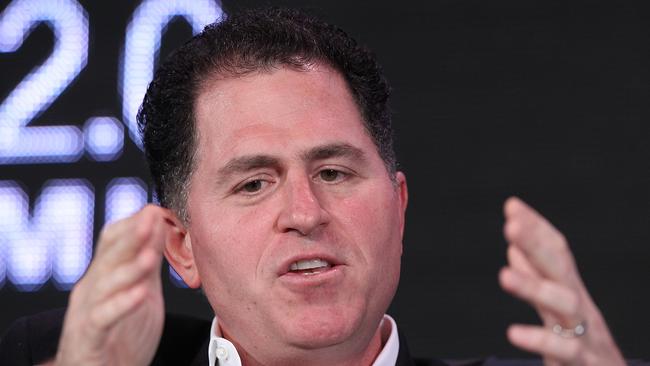
“Whenever you have a crisis like this, you have to think about how you become more relevant to your customer. Customer needs are always evolving, but in a situation like this, they were totally turned upside down. Customers had immediate requirements to support work from home, and many wanted help with payment flexibility, so we put a program in place.
“We also saw that in many cases, they were accelerating their digital transformations. So there were a lot of new requirements there and our team rallied around that. We’re really proud of the way we responded rapidly and helped customers through this.”
Read the full story here.
Melissa Iaria 2.50pm: Man cops fine over trip for bargain buy
A 40-minute trip across town to pick up a cheap mattress turned into an expensive exercise for man who was one of 109 Victorians fined for breaching lockdown rules over the past 24 hours.
The driver was caught travelling from Ascot Vale to the outer Melbourne suburb of Keysborough about 45km away, told police he was on his way to collect the mattress, which he found “cheap” on Facebook.
Other fines dished out included a man and woman found at a friend’s holiday home on the Mornington Peninsula where they planned to stay the weekend.
Two women hanging out at Tarneit railway station without a valid reason were also penalised.
Twenty people were caught failing to wear a mask, while 36 were fined for breaking curfew.
More than 2000 vehicles were checked and 2590 spot checks were done on people at homes, businesses and public places statewide.
Police have conducted 419,772 spot checks since March 21.
READ MORE: Catherine McGregor — Hope springs eternal int eh year of the infernal
Frances Vinall 2.30pm: Qld’s Deputy Premier calls Peter Dutton a liar
Queensland Deputy Premier Steven Miles has accused Home Affairs Minister Peter Dutton of “lying” about how Hollywood star Tom Hanks entered Australia to film a movie.
The row started because the actor was granted an exemption from Queensland’s strict border rules and entered the state from America on Tuesday night.
Hanks has already contracted COVID-19 in Queensland, when he was filming a movie there in March.
The American star along with 11 family, staff, cast and crew were allowed entry into Queensland last week to allow the filming of an Elvis Presley biopic, directed by Baz Luhrmann, to continue.
That didn’t sit well with Mr Dutton, who attacked the Queensland government on Friday.
“If you are Tom Hanks from California, you are OK,” he said.

“If you are Tom Hanks from Chermside or Castle Hill, sorry, you are not coming in, even to your brother’s funeral or your dying daughter.
“It is just unacceptable.”
But Steven Miles hit back on Saturday, saying it was Peter Dutton – the federal minister responsible for borders – who had allowed Hanks’ entry.
“Non-residents coming to Australia need to be permitted to come here by Border Force,” he said.
“And what that means is that when Peter Dutton launched that extraordinary attack during the week, he was lying.
“He was saying that it was us that let Tom Hanks in, when in fact it was him and his own department that let Tom Hanks in.
“I think Peter Dutton owes our Premier and our chief health officer an apology.”
READ MORE: Paul Kelly — Small-minded states must think big
Helen Trinca 2pm: A corona trilogy in the age of fear
Philosopher Lars Svendsen jokes that the books he has written over the past 20 years — on boredom, fear and loneliness — are his Corona Trilogy.
The Norwegian academic says these are the three big emotions that have dominated the past six months of COVID-19 lockdowns across the globe.
Boredom is the strongest feeling in his own country, while loneliness — widely identified by governments as the most widespread side-effect of the pandemic — turns out not to have increased.

As for fear, Svendsen, the author of a 2008 book called A Philosophy of Fear, says it’s fine and even useful to feel fear. But the question is: “How fearful should we be?”
The answer, according to about 57 per cent of those surveyed by the Australian Red Cross, is fearful enough to decline to help a person suffering a heart attack because they might be carrying COVID-19.
Read Helen Trinca’s full analysis here.
James Law 1.30pm: NSW records six new virus cases
People who attended a Sydney KFC restaurant have been told to watch for coronavirus symptoms and get tested if necessary after a Covid-positive person visited.
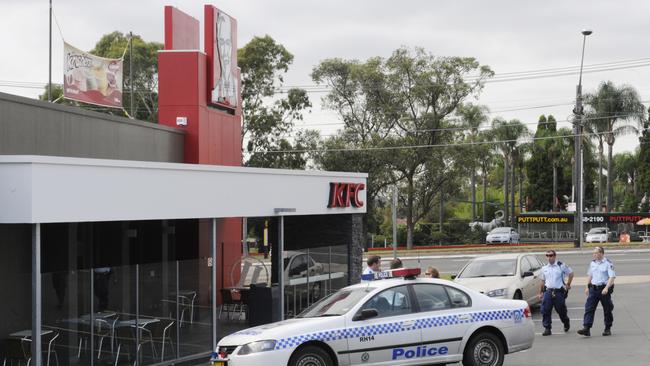
The known case visited the franchise’s Ermington restaurant, in the city’s northwest, on Monday, September 7, some time between 12.30pm and 9.30pm.
NSW recorded only six new coronavirus cases on Saturday, bringing the state’s total to 3968.
Of the six new cases, one is a returned overseas traveller in hotel quarantine, and five were acquired in Australia, linked to known cases or clusters, NSW Health reported.
Four are close contacts of previously reported cases linked to the Concord Hospital cluster.
Read more: KFC goers on high alert
Frances Vinall 1.10pm: Queensland records three new coronavirus cases
Queensland recorded three new cases of COVID-19 on Saturday, Deputy Premier Steven Miles announced.
He said three of the two new cases were girls aged between 0-9.
The two young girls are in quarantine, and are linked to the Brisbane Youth Detention Centre cluster.
The third new case is a man in his 20s also linked to a known outbreak, Mr Miles said.
The state now has 31 active cases.
Queensland’s Premier Annastacia Palaszczuk said the new cases had already been traced by the state’s health department.
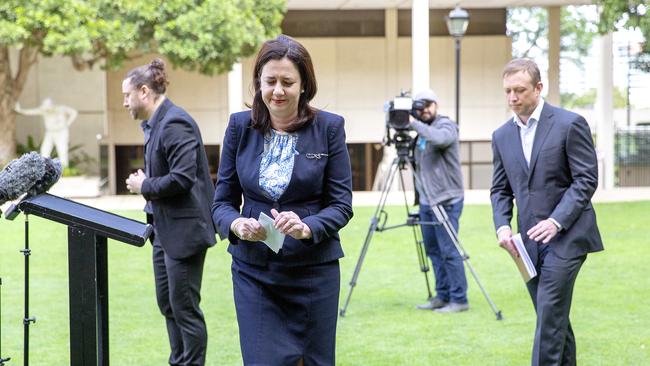
“Today’s new cases are all contacts of previously confirmed cases and are in quarantine,” she said.
It follows the state recording two new cases on Friday, zero on Thursday and eight on Wednesday.
Read the full story here.
Emily Ritchie 12.15pm: Vic Premier, CHO defend Covid modelling
Victorian Premier and his chief health officer have backed away from modelling used to justify the state’s road map out of coronavirus lockdown after The Australian published criticism from numerous Melbourne University health experts who say the targets for easing restrictions are excessive.
It comes despite the Premier last Sunday saying “you can’t argue with science” while citing the “supercomputer” modelling to justify extending lockdown measures potentially into November unless daily cases dropped below five.
CHO Professor Brett Sutton told reporters today that the modelling used was from several sources.
“That modelling was really significant and a core input into decision-making for policy decisions, but it was by no means the only one,’’ he said.
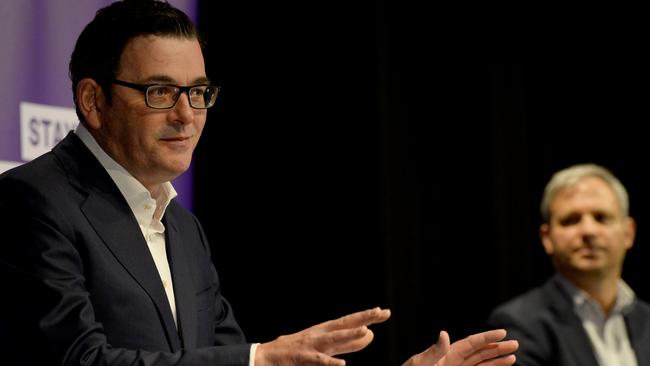
“There have been lots of other inputs and, of course, it has been the experience of watching the numbers, both here and in other jurisdictions, to see the kind of levels you need to get to sustain those very low levels of transmission or get to know transmission if you can.”
Melbourne University’s dean and assistant Vice Chancellor of Health Shitij Kapur and colleague James McCaw, a professor of mathematical biology, in The Weekend Australian questioned the Victorian government’s suppression target of less than five new cases over a two-week period by October 26. While it wasn’t impossible, it would be a target not yet achieved in any comparable country, they said.
“No major city in Europe has attempted to suppress transmission to this extent — not London, nor Paris or Berlin. Nor have New York or LA or Chicago; and certainly not Sao Paulo, Mexico City or Mumbai,” they said.
“Even the Asian cities lauded for their public health systems and compliant populations — Hong Kong, Singapore, Tokyo or Seoul — have not managed to achieve this strict threshold. Ironically the only major city that has achieved this is Wuhan. A city of 11 million that endured thousands of cases but then imposed perhaps the harshest of lockdowns, barring practically all movement and work.”
The professors said the models had not justified the political decisions the government had made.
Premier Daniel Andrews said the data trumped modelling “every time”.
“I have said many times this week and I will make the point again because I think it is an important one, data trumps modelling every time. Actual numbers,’’ he said.
The premier said the virus gripping the state was “not an academic exercise” and that commonsense measures to phase out the second wave were needed based on data as well as predictions.
“We have put together a road map with a series of safe and steady steps to open and stay open,” Mr Andrews said today.
“We have at no point said, ‘this is set in stone tablets and can never be changed’. In fact, we have been at pains to make the point as each day passes, the actual data, not what was presumed but what has actually occurred, gets put into this and the modelling, the process will be rerun to see where we are in real terms, and where we are compared to where we thought we would be.”
Assumptions were “always beaten by the actuals,” he said.
“That is why this is a constant, iterative development process.
“It is not set in stone and we have to wait and see exactly how successful we are in all of the targets we have set. They are targets but the point that was just made a moment ago, they are targets many people would have thought they were less likely than likely that by the middle of next week, regional Victoria would have such low case numbers they would be able to take not one step but two steps.”
READ MORE: Virus modelling far from perfect
Emily Ritchie 11.30am: Pet grooming and beauty services open soon
Victorian pet grooming businesses will be allowed to reopen from September 28 and beauty and hairdressing services where a mask can be worn through the entire service will be permitted under the state’s third step out of lockdown.
Premier Daniel Andrews clarified this would not include mobile pet groomers.
“Pet owners will be able to drop off their pets to the venue,” he told reporters in Melbourne on Saturday.
“It must be a venue, it cannot be a mobile pet grooming business. This is very similar to what veterinary clinics are already doing in some circumstances. That is how they are operating across the board and pet grooming will also, is already permitted in regional Victoria as we know.

“It may seem trivial to some but it’s pretty important to others.”
Mr Andrews also said, while beauty and personal services had previously been listed as able to open under the final step of the road map out of lockdown, recent public health advice allowed him to rearrange so they could open under the third step.
This will not include services like facials, face piercing and facial tattoos.
“Under the road map, hairdressers are listed to open in Melbourne under the third step and beauty and personal services to open under the last step,’’ Mr Andrews said.
“Following further considerations in public health advice, I can announce that beauty and personal services where a mask can be worn for the entire time … will be able to proceed in the third step alongside hairdressers.”
Mr Andrews said the current average daily increase in cases in metropolitan Melbourne was 61.6 and 4.3 in regional Victoria.
“It is very good news for regional Victoria and I hope every single person in metro Melbourne is looking to the numbers in regional Victoria and seeing what can be delivered,” Mr Andrews said.
“Regional Victoria is so close, just a few days and they will potentially be able to take not just a single step but two of those steps and be essentially open.”
Read more: decision to shut hairdressers down ‘should be cut and dried’
Christine Kellett 11.45am: NSW records six new cases
NSW has recorded six new cases of coronavirus in the 24 hours to 8pm.
Five of the cases are linked to known outbreaks and the sixth is a returned overseas traveller.
The increase brings the state’s total number of coronavirus cases to 3968.
Six new cases of COVID-19 were diagnosed in the 24 hours to 8pm last night, bringing the total number of cases in NSW to 3,968.
— NSW Health (@NSWHealth) September 12, 2020
Of the six new cases:
• One is a returned overseas traveller in hotel quarantine
• Five are locally acquired and linked to a known case or cluster pic.twitter.com/6VZ2r7Mrit
READ MORE: Former NSW premier John Fahey dead at 75
Emily Ritchie 11.30am: Regional case confirmed as false positive
Premier Daniel Andrews has thanked Victorians for getting tested after expressing concern about lower testing numbers earlier this week, as a regional case is confirmed as a false positive.
Victoria recorded its lowest daily increase in coronavirus cases since June 26 on Saturday, with 37 new cases and six new deaths.
The deaths include two women and a man in their 80s and two women and a man in their 90s. Mr Andrews said all six deaths were connected to outbreaks in aged care facilities.
There are now 126 Victorians in hospital. Nine of those people are in intensive care, with six people currently requiring a ventilator.
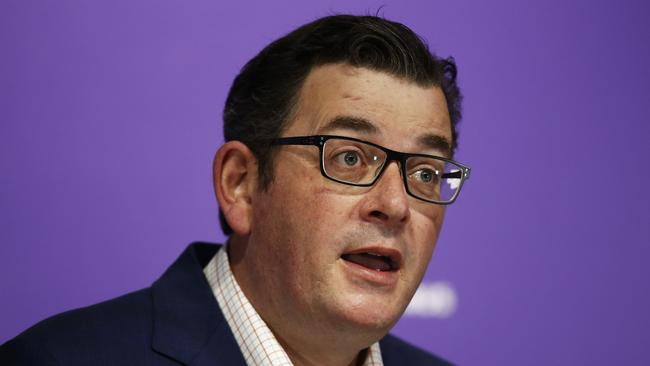
Mr Andrews thanked the more than 14,500 Victorians who got tested for the virus on Friday.
“It is a massive contribution that you are making and again we will make the appeal, any symptoms whatsoever, as soon as they begin, please get tested,” Mr Andrews said. “There are more than 200 sites across the state and if your personal circumstances mean you can’t get to one of those sites, we will in fact come to you and conduct the test in your home.”
Mr Andrews also said there had been no new regional cases since Thursday’s report, with a case reported in Eucha on Friday confirmed as a false positive.
‘’In terms of the Echuca issue and I think most of you have been brought up to speed on that, we’re very pleased that I was a false positive and that there is no change to the likely, in fact, nothing is certain but regional Victoria remains on track to be open to take not want but two steps I saved the middle of next week,’’ he said.
“That is proof positive to every single Victorian that we can drive these numbers down and we can open up and do it safely and I want to congratulate and thank every single regional Victorian for the part they are playing on that.
‘’It was only five weeks ago that we had 725 cases in a single day. To now be down to 37 cases … the trend is working and the strategy is working,” he said.
“People can be hopeful and confident and positive that we will be able to take these steps. You can only keep numbers low if you first drive them down to very low levels. That is exactly what is happening and that is good news.”
READ MORE: Victoria’s smallest case number in months
Joseph Lam 11.25am: Two steps at a time for regional Victoria
If new cases remain below five per day, regional Victoria may fastrack its road map to recovery, jumping two steps as early as mid next week.
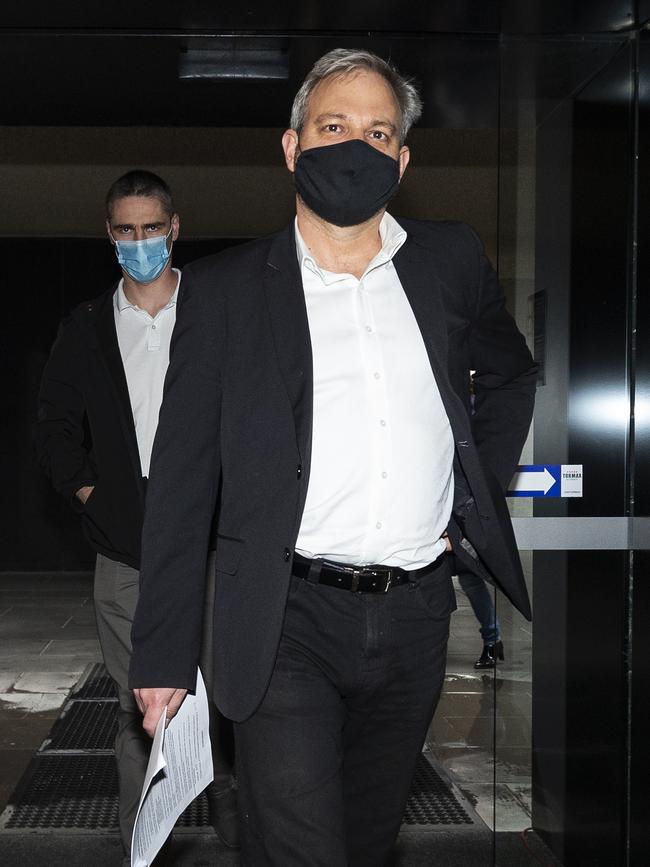
Addressing media on Saturday, Victorian Premier Daniel Andrews and state chief health officer Brett Sutton confirmed there are 1,251 active cases in Victoria, 625 of which are linked to aged care and 58 of which are in regional areas.
Since August 29, metro Victoria has averaged 61.6 new cases per day compared to just 4.3 cases in regional Victoria.
Asked if towns which have not seen an active case will be treated the same as towns which had, Professor Sutton responded, “I think we have to”.
“Even if there have been areas with no cases, they’ll be treated the same as the rest of regional Victoria.”
Mr Andrews has defended questions on dividing regional Victoria saying that, “all of regional Victoria moves as one”.
READ MORE: Victoria’s road map to recovery
Christine Kellett 10.50am: Watch Daniel Andrews address the media
Victorian Premier Daniel Andrews is due to hold his daily press conference at 11am, as the state records its lowest daily case numbers in months.
As usual, we will live stream the press conference here:
It comes as world-leading scientists linked to the modelling Mr Andrews has used to lock down Melbourne say the research has been misrepresented and have urged the Premier to rethink the restrictions as his virus suppression targets are impossible to meet.
Read the full story here.
Rachel Baxendale 10.25am: Chief doing job he’s best at: Andrews
Daniel Andrews has defended a decision by health bureaucrats to stop his Chief Health Officer acting as state controller of the coronavirus pandemic response — as occurs in other states — in favour of appointing two departmental emergency management officials.

Victoria’s hotel quarantine inquiry heard on Thursday that Department of Health and Human Services Deputy Secretary Melissa Skilbeck had made the decision, against Professor Brett Sutton’s wishes, to instead appoint bureaucrats Andrea Spiteri and Jason Helps.
Fronting Friday’s media conference alongside Professor Sutton’s deputy, Allen Cheng, Mr Andrews defended the decision to sideline his absent Chief Health Officer.
“I think it is really important to understand that the state controller is a multi-agency co-ordination function,” the Premier said.
Read the full story here.
Matthew Denholm 9.55am: Covid puts Antarctic science on ice
Coronavirus has forced a major scaling-back of Australia’s Antarctic operations this summer, amid warnings the disease poses a threat to the future of vital science on the frozen continent.
To reduce the risk of the virus wreaking havoc on isolated stations, the Australian Antarctic Division will slash expeditioner numbers for this summer from the usual 500-600 to just 250-270.
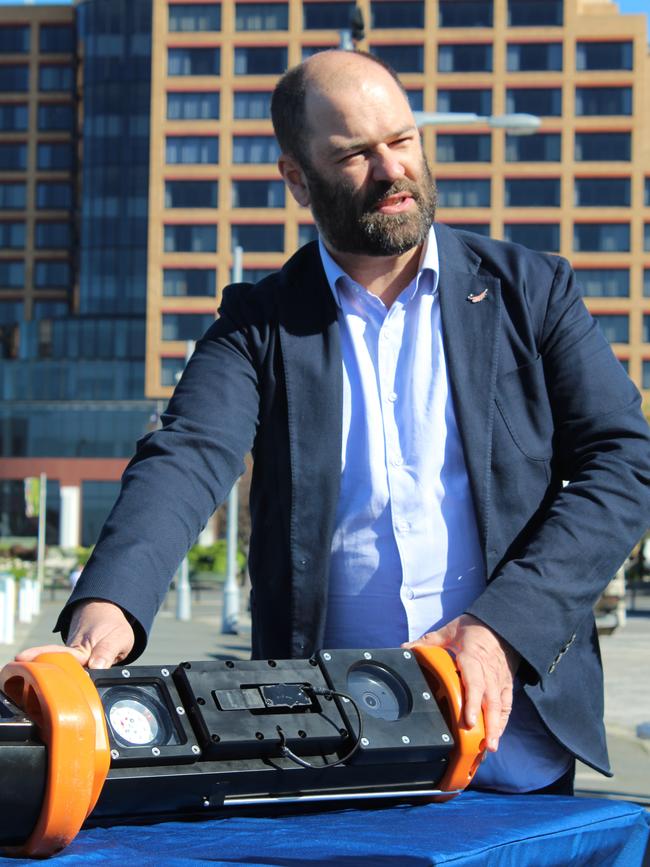
“They are the core people who maintain the station; keep the lights on,” AAD operations and safety chief Charlton Clark told The Weekend Australian.
“We’re making a conscious decision to reduce the scale and scope of the season and focus on resupplying the stations and changing over the personnel.”
The move will significantly curtail science, delay major projects, including the Macquarie Island Station rebuild, and force dozens of expeditioners already in Antarctica for 12 months to spend another summer on the ice.
Read the full story here.
Remy Varga 9.26am: Hotel quarantine guest ‘deliberately overdosing’
A hotel quarantine guest suffering from a mental health condition sought help from Victoria’s Police Minister because their situation was so bad they were “purposely overdosing on medication”, an inquiry has heard.
The probe into the state government fiasco on Friday heard an email chain detailing the cry for help to Lisa Neville also suggested the Department of Jobs, Regions and Precincts run hotline was advising guests to take up complaints with their local members.
Merrin Bamert, who shared the role of COVID-19 Commander with Pam Williams, replied “not appropriate at all” to the April 2 email.
When counsel assisting Ben Ihle asked Ms Bamert to clarify what part of the email was inappropriate, she told the inquiry her recollection was vague.

“I think there was a comment about taking increased medication and that it was not the responsibility of [call centre staff] to provide information about that – or that it‘s not appropriate that they tell people to ring their local members,” she said.
Ms Bamert said in the early days of the program there wasn’t an established complaint protocol and guests were instead given a 1800 hotline number, which was managed by DJPR.
But she said unhappy guests were on Facebook encouraging each other to take up their complaints with their local MPs, which she heard was also being suggested by hotline staff.
Read the full story here.
Joseph Lam 9am: Victoria records 37 new cases, six deaths
There has been a glimmer of hope in Victoria, with the state recording its lowest daily case numbers since June. The state has confirmed 37 new infections and six deaths in the 24 hours to Saturday, according to the latest figures from the Department of Health and Human Services.
The latest figures are down from 43 new cases and nine lives lost in the 24 hours to Friday. Since September 3, Victoria has kept the number of new daily cases under 100.
#COVID19Data for 12 September, 2020.
— VicGovDHHS (@VicGovDHHS) September 11, 2020
Yesterday there were 37 new cases reported and we are sad to report 6 lives lost. Our condolences to the friends and families affected. More information will be available later today. pic.twitter.com/Sr8SaTvPFt
It’s the lowest daily increase since 30 cases were reported on June 26.
The total number of coronavirus cases recorded in Victoria since the start of the pandemic is about 19,800.
The average daily case number for metropolitan Melbourne has fallen this week and sat at 65.3 on Friday, down from the high 80s earlier this week. In regional Victoria it was 4.7.
READ MORE: Chris Kenny — Locked down by political arrogance
Mackenzie Scott 8.30am: Lockdown lesson: let’s get out of here
Justine Campbell could see the mental health impacts of lockdowns on her three children after 5½ months of homeschooling. So when stage-four restrictions were announced across Melbourne, the psychologist decided to cut ties with the Victorian capital for good, and shift to Brisbane.
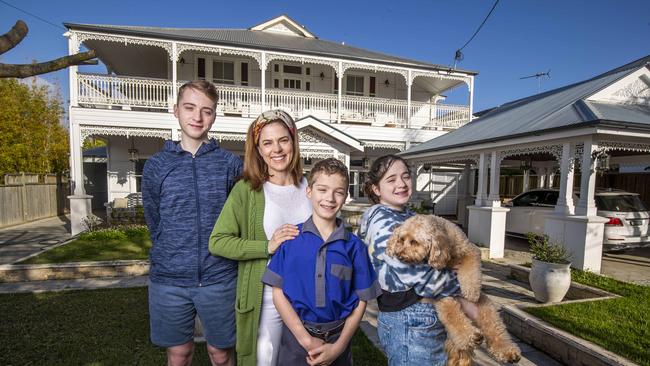
The family returned to Australia from Hong Kong only two years ago, drawn to Melbourne’s strong academic reputation. But, while elder son Ethan, 16, was able to continue his Year 11 schooling, the younger two were struggling to cope, developing Zoom fatigue and missing being with friends
“I lost track of what was important. But that’s what Covid has done, it has made people realise what makes them happy,” Ms Campbell said.
Read the full story of the Campbell family here.
Chao Deng 7.45am: Hundreds of thousands trial Chinese vaccine
A Chinese pharmaceutical company has injected hundreds of thousands of people with experimental Covid-19 vaccines, as its Western counterparts warn against administering mass vaccinations before rigorous scientific studies are complete.

China National Biotec Group Co., a subsidiary of state-owned Sinopharm, has given two experimental vaccine candidates to hundreds of thousands of people under an emergency-use condition approved by Beijing in July, the company said this week. Separately, Chinese drugmaker Sinovac Biotech Ltd. said it has inoculated around 3,000 of its employees and their family members, including the firm’s chief executive, with its experimental coronavirus vaccine.
The three vaccine candidates are still undergoing Phase 3 clinical trials, which involve testing a vaccine’s safety and effectiveness on thousands of people. Six other leading Covid-19 vaccine candidates are also in this final phase, according to the World Health Organization.
The Wall Street Journal
Read the full story here.
Jamie Walker 6.25am: First vaccine ‘unlikely to deliver knockout’
The co-inventor of the world’s first cancer vaccine Ian Frazer has warned that early COVID-19 vaccines may deliver only a fraction of the immunity of later drugs.
Professor Frazer said he would be happy if one of the candidate vaccines being fast-tracked to regulatory approval here and overseas achieved 30 per cent effectiveness, lower than the minimum World Health Organisation benchmark.
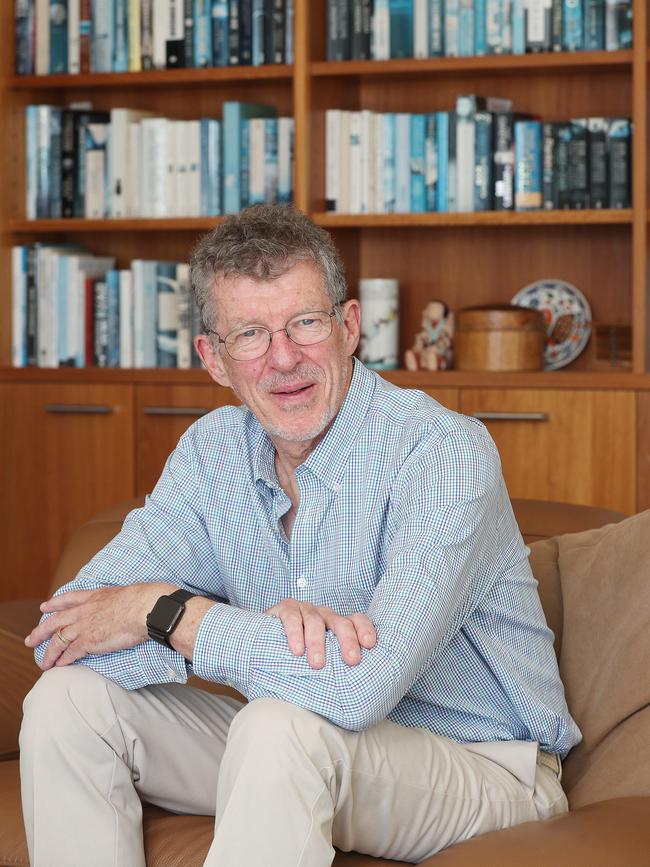
But he rejected a call for the rollout to be delayed after the federal government signed up this week for 80 million doses of yet-to-be-licensed vaccines from Britain’s Oxford University and the University of Queensland, to be produced in Australia by local drugmaker CSL.
The senior vice-president of CSL vaccine arm Seqirus, Russell Basser, said registration studies had 50-60 per cent effectiveness as a target, with a minimum rate of 30 per cent.
“I think if you ask the general public, governments as well, whether they would be happy to accept a vaccine that was 50 per cent protective right now, with the alternative of no vaccine, you would take a 50 per cent-effective vaccine and use it,” Professor Frazer said.
“Anything that decreases the burden of disease in the community must be good, so long as the vaccines are safe. That’s the really critical bit, to demonstrate safety first, and then whatever degree of efficacy we get better than 50 per cent is a good benchmark.
Read the full story here.
Samantha Bailey 6.15am: Pandemic sees book sales soar 70pc
Australians are getting back into books as a result of the coronavirus lockdowns and online book retailer Booktopia is benefiting.
For Booktopia, sales of physical books have been up at least 70 per cent year-on-year since the pandemic hit locally.
Read more: You give me fever: lockdown lust heats up erotica
“You can’t call it an essential but it was very much in demand. And not only for Booktopia in online sales — in the beginning, bookstore sales were going crazy,” Booktopia chief executive Tony Nash says.
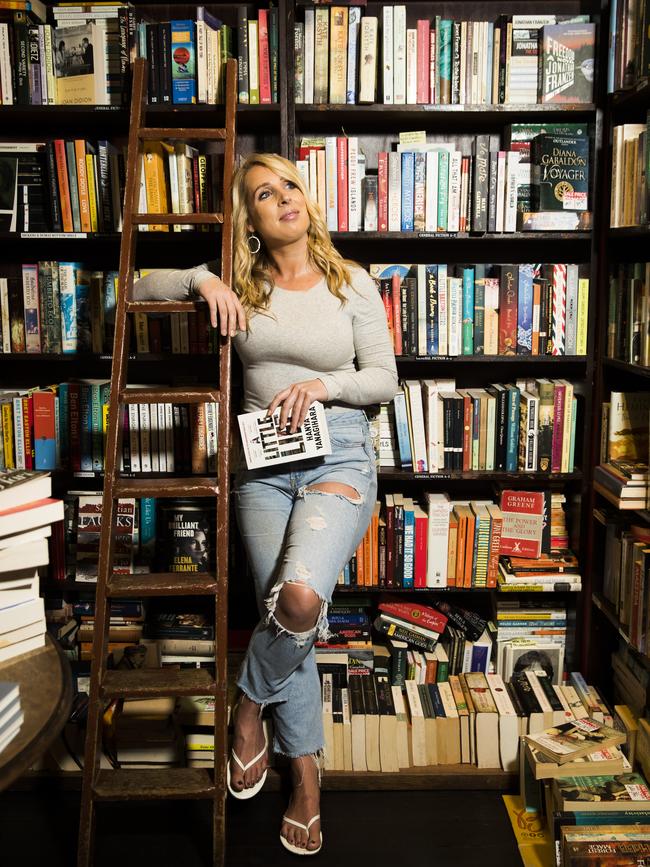
Nash says that lockdown reading trends have come in waves. Initially people were buying a lot of nonfiction but as the restrictions wore on, puzzles and adult colouring became more popular.
“Then once reality set in and people were getting into the rhythm of working from home or assessing what they wanted to do next, a lot of self-education, self-help, career development, skills, cooking, baking — anything that was nonfiction — lifestyle kind of titles did really well,” he says.
Read the full story here.
Amos Aikman, David Penberthy 6am: SA, NT to clear Sydney’s hotspot status
While other states continue to maintain hard border closures South Australia is poised to open itself up to visitors from the ACT and possibly NSW within days.
But SA will take a “cautious, staged and gradual” approach to letting Victorian residents in, with Premier Steven Marshall giving no guarantees the border with Victoria would be open by Christmas.
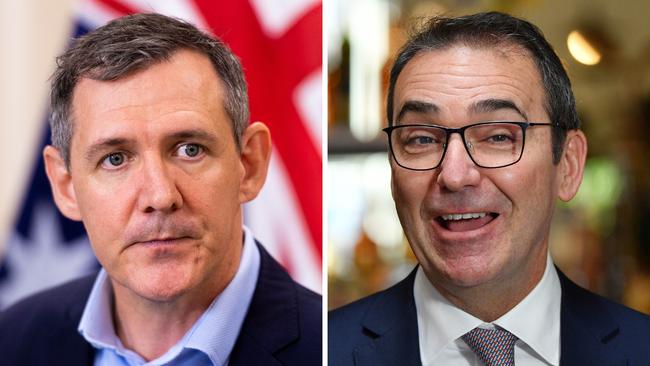
Meanwhile Sydneysiders will soon be able to visit the Northern Territory without enduring mandatory quarantine, provided the city’s daily coronavirus case numbers do not increase.
Some easing of restrictions is also on the cards for Victorians, although the government in Darwin is yet to decide which parts of that state will be given Territory access first.
Read more: SA to life ACT, NSW travel ban within days
Chief Minister Michael Gunner, who has so far resisted specifying the definition of a hotspot, on Friday praised Sydney’s single-digit daily infections and the state government’s “superb” contract tracing and testing systems.
“For these reasons, the Northern Territory will plan to remove the hotspot status declaration for Greater Sydney in 28 days,” he said. “From Friday, October 9, arrivals from Greater Sydney will not need to undertake 14 days of supervised quarantine.”
Read the full story here.




To join the conversation, please log in. Don't have an account? Register
Join the conversation, you are commenting as Logout